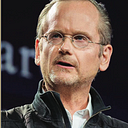
Almost 25 years ago, I published a book about the nature of regulation in cyberspace (which is the cringey word we used back then to talk about the Internet): Code and Other Laws of Cyberspace. The book argued that we should recognize how technology — or as I put it, “code,” as in the software and hardware that constituted the Internet— can function as law. That it sets permissions, creates affordances, and blocks uses, all as the programmers decide. And that though the law set by the original Internet embraced values many celebrated — the freedom to innovate, free speech, and privacy — those values, I argued, would be threatened, as the code of cyberspace was evolved. The argument became a meme: “Code is law.”
Not everyone was convinced. A review in the New York Times called me a “digital Cassandra”: “Lessig … predicts that the Internet will become a monster that tracks our every move, but that nobody will heed his warning.” Oh well.
Yet over time, a wide range of great work began to integrate what many of us considered obvious ideas into a more sophisticated understanding of how the Internet might best be regulated. And last month, I had the honor of participating in a dissertation defense that applies the idea brilliantly to the regulation of blockchain infrastructure.
But when what’s called Web 3 was born, especially as it related to Bitcoin and crypto assets generally, the slogan “code is law” began to be used in a very different sense. Code was not “law” in the sense that it affected behavior as regulation might. Code was law, as in nothing else constrained the users of that code. The first major hack of the Ethereum blockchain was defended with the slogan: the hackers had only done what the code had enabled, and since “code is law” their hack was legal. And last month, Avraham Eisenberg appeared in federal court because of his bleeding more than $100 million from the Mango Markets platform. Eisenberg defended his actions, as this paper reported, “saying he did only what Mango’s software code made possible.”
When I first read of this obvious misunderstanding, I didn’t take it seriously: Who could really believe that technology could displace law? Or override it, in the sense that the law would yield to what the code enabled? But as I’ve watched defendant after defendant…
